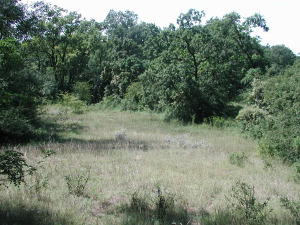Steppe Oak Woods of Nagykőrös
The sand steppe oak woods and closed lowland steppe oak woods located at Nagykőrös represent a unique value not only in Hungary, but also throughout Europe due to their unique characteristics, indigenous status and extension. The sand steppe oak woods located in this area is the largest and most indigenous stand of sand steppe forest, thus its preservation for the future is our responsibility.
The steppe woods once covered large territories on the Eastern part of Europe. Our settler ancestors also preferred this type of habitat; during the period of the Settlement they reached the Carpathian Basin by following this unique mixture of woods and pastures. Unfortunately the further penetration of agriculture almost entirely eliminated this type of habitat, leaving some remaining spots. The regulation of rivers has further degraded the forest by reducing the ground water level, then in the last decades many populations were replaced by plantations of Black Locust and hybrid Poplars. The still existing sand steppe oak woods of the Great Hungarian Plain with their extremely diverse flora and fauna emerge like islands in the sea of plantations and agricultural fields.
The Duna-Ipoly National Park Directorate, together with WWF Hungary and the Municipality of Nagykőrös have set the objective to preserve the largest remaining steppe oak woods in their indigenous state, and where needed to restore their habitat. Taking over the tasks of nature conservation management, we aim to form woods of natural composition and structure from the forests degraded to a variable extent, in a way that they could provide habitat to more and more species. The invasive species – alien species – should be removed from several places; other places should be fenced off from the higher than normal number of Roe Deer, Fallow Deer, and Wild Boar searching for food and threatening the growth of new generation oaks. We will build a study trail and establish an educational centre in the woods, thus more and more people will know about the hidden values of the Hungarian Great Plain, and will understand the importance of its preservation for future generations.
|